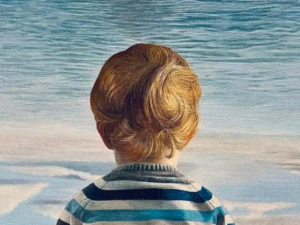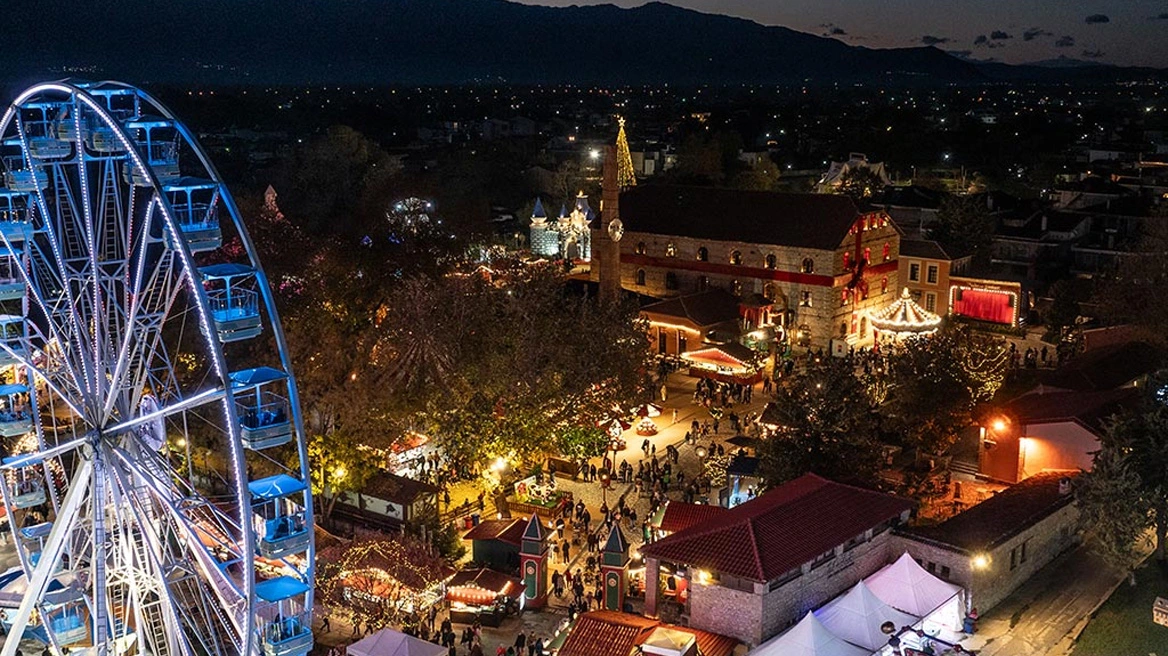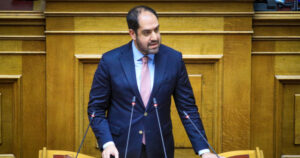On July 27, under the patronage of the President of the Republic of Greece, Katerina Sakellaropoulou, the opening of the anniversary exhibition “Towards the Garden of the Hesperides” will take place as part of the “Ploes” art institution, which is celebrating its 30th year this year in Andros Town, organized by the P. & M. Kydoniew Foundation.
The annual institution is considered successful, as evidenced by the steadily increasing and enthusiastic public attendance at its summer events, while the high quality of the exhibitions has already been recognized both by experts and by the most discerning collectors, connoisseurs, and art lovers who attend regularly. The institution is seen as fulfilling the intentions of its founders not merely due to the repeated annual art events, as this would be akin to a festival.
What characterizes the institution is its consistent orientation and the progressive relevance of its exhibitions, which aim not only at responsible decentralization and representative presentation of the most significant post-war creators through their works but also at showcasing the most notable contemporary artists.
Moreover, the primary focus of “Ploes” is on the modern highlighting of the social role that art is meant to indicate today.
In this case, each exhibited work, apart from initiating a dialogue with the other works in the exhibition and with the audience, responds to the aesthetic and ideological demands or challenges and concerns of our time, while also bringing to light spiritual values from our traditional heritage, which are bridged with contemporary existential and expressive demands.
From this perspective of systematicity and consistency of its programmatic principles, “Ploes” is the most enduring private and public art institution in our country.
As the organizers explain, we are currently experiencing the WOKE Culture, the consequences of newly introduced notions of limitless “entitlement,” social “deconstruction,” and mass-integrated or pluralistic “inclusion.” However, in terms of mindsets and collective beliefs, behaviors, and life perceptions affecting society, art does not take a stance, nor does the current exhibition. This is not its role. Art does not engage in politics or propaganda. It is up to individuals to judge, make decisions, and assume their responsibilities. Art helps them think, reflect more broadly, and look beyond the initial impressions that draw their attention.
However, since we are living in a transitional and critical period (economic, environmental, cultural), with radical changes and unknown impacts on the resilience of today’s emerging reality (with its pros and cons as derivatives of globalization), and because we look forward to a new humanism centered on freedom but naturally through its ethical and spiritual dimensions, we have turned to the ancient tradition, exploring whether there were allegorical foundations and models for fundamental and timeless humanistic values.
Indeed, in mythology (which is a codified philosophy of life), the 11th labor of Hercules, which is essentially triple and concerns the “Garden of the Hesperides,” encompasses the most significant values for anyone wishing to re-establish (through the symbolism of the three Golden Apples of this “Garden of the Gods”) a healthy society based on the principles of a new and naturally modernized Humanism. In other words, it is the greatest human effort to lay the foundations of a new life after realizing, through the diverse adventures of life, the possibilities of self-transcendence.
The curator of the exhibition, Ms. Athena Schina, writes in the accompanying extensive catalog: “It is clear that art does not illustrate reality, as it does not compete with it. Even through its apparent realism, it poses questions, illuminates uncertainties and ambiguities, highlights relativity and enigmatic paradoxes inherent in life, as creators—through their expressive rhythms and modes of their own stylistic ‘writing’—sensitize fragmentary elements and visualize ephemeral moments.” The writer continues: “Creators, moreover, transform and simultaneously shape unexpected aspects of everyday life, interacting with memories and psychodynamic impressions. They create various artistic impressions, relating colors, distances, and tones, creating contradictions and symbiotic contrasts through diverse formulations that subtly highlight the continually changing associations and constantly renewing bridges between the visible and the invisible. Those components cultivate the viewer’s psyche, enriching imagination and activating thought.”
The exhibition features works in painting, sculpture, printmaking, ceramics, and mixed media by artists: Sotiria Alevisou, Dimitris Anastasiou, Anni Argyroiliopoulou, Olga Verykaki, Maria Vlanti, Maria Genitsariou, Eleni Glinou, Natasha Gryllaki, Dimitris Zouroudis, Alexandra Isakidi, Christina Kalbari, Iosifina Kosma, Panagiotis Koulouras, Janet Liadaki, Maria Nayou, Georgianna Dalaras, Florentia Oikonomidou, Elena Papadimitriou, Depi Pavlidou, Lila Polenaki, Fotini Poulia, Katerina Rimpatiou, Nikos Saperas, Natasha Sarri, Aphrodite Sezenia, Dimitris Skouroyannis, Fotini Stefanidi, Konstantina Silikou, Stratis Tavlaridis, and Giorgos Chouliaras.
Exhibition Duration: Saturday, July 27 to Sunday, September 29, 2024
Opening Hours: Daily from 10:30 – 14:30 & 18:30 – 21:30, except Tuesday.
Ask me anything
Explore related questions





